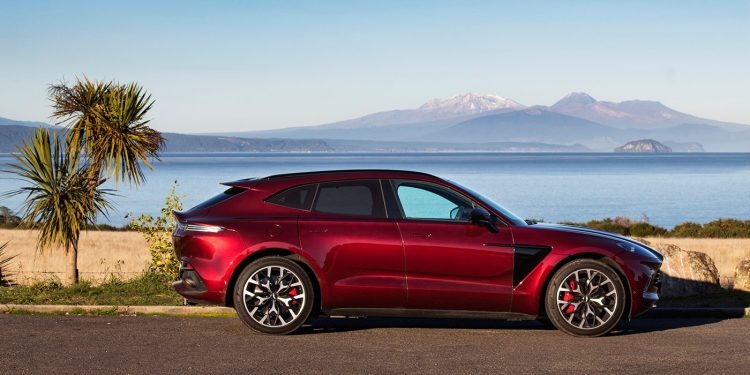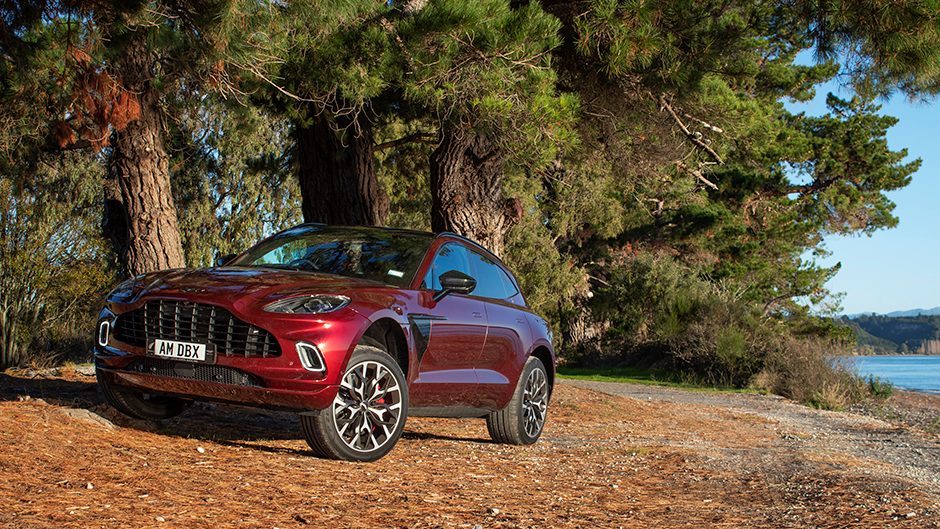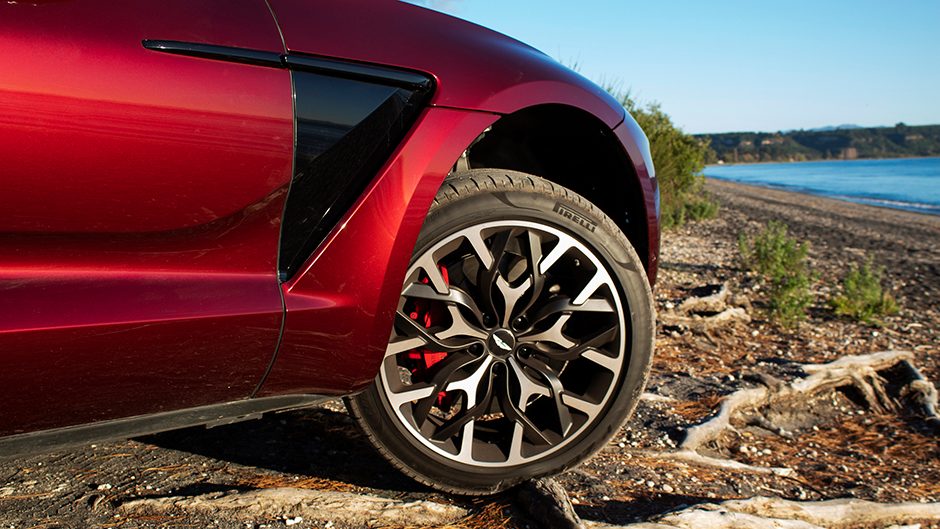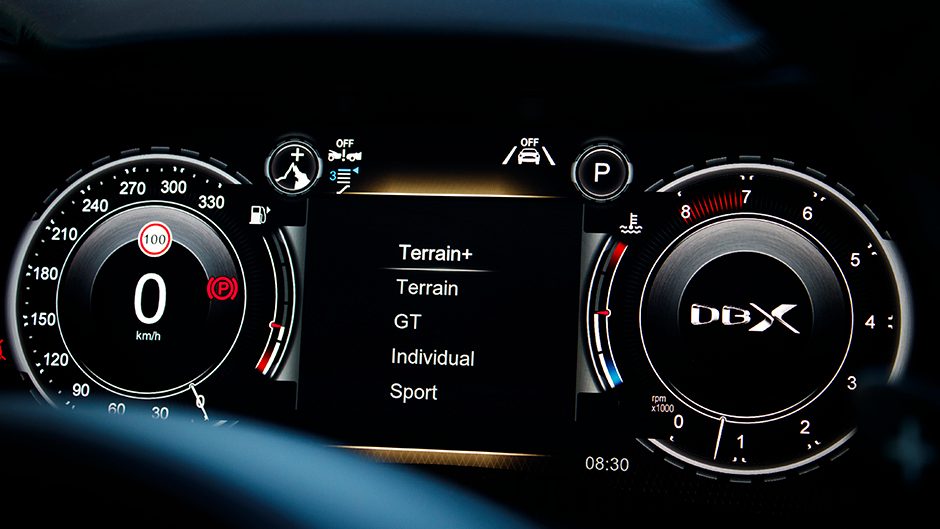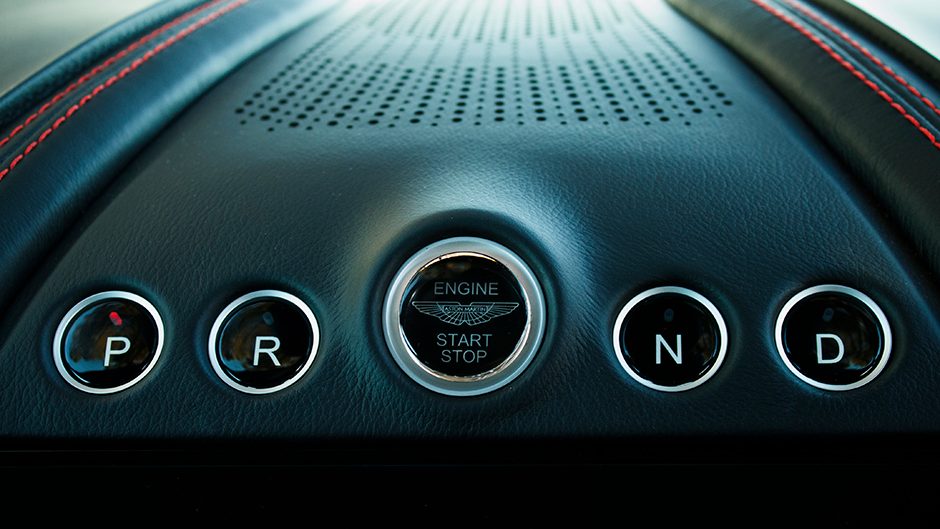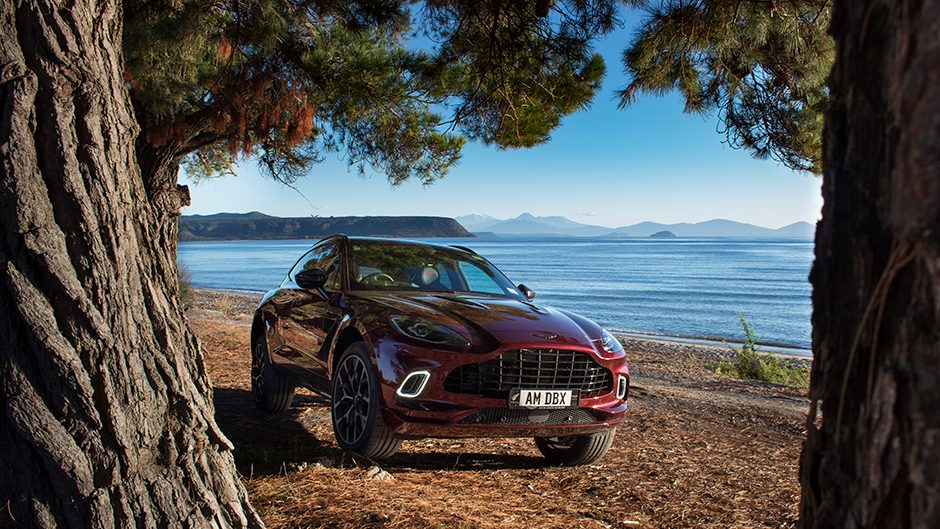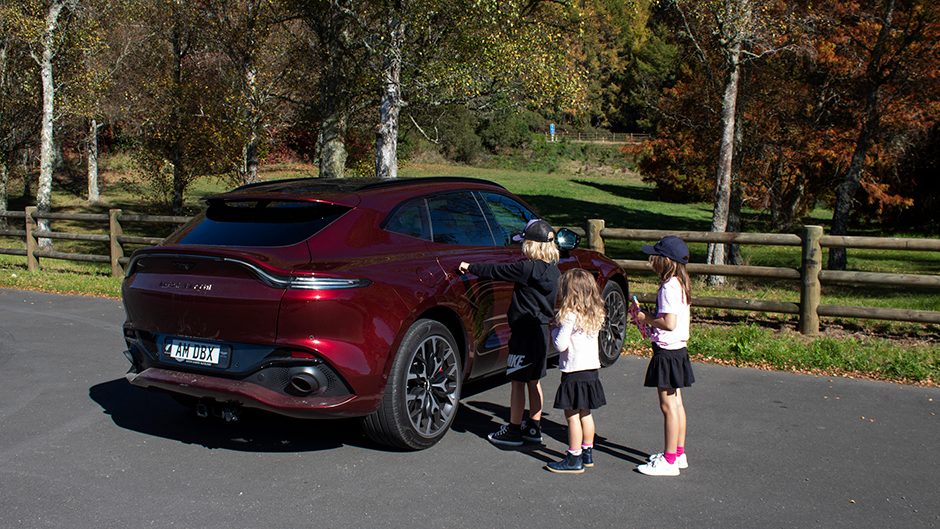2021 Aston Martin DBX road trip
Words Kyle Cassidy | Photos Kyle Cassidy
We put the Aston Martin DBX to the sternest test, a weekend away with the gremlins in tow. Did the finely crafted interior hold up to such an assessment?
Aston Martin has been making fast getaway cars for years. But ones to get away in, with the family, have been few and far between. Squeezing three kids in the back of a Rapide is mission impossible but now fast and affluent whanau can put the DBX on the shopping list. Aston’s first SUV we can certify as family friendly, having experienced its charms on a weekend jaunt to Taupo.
Super GTs and sports cars are perfect for an occasion, but SUVs do everyday life. This DBX can tow (up to 2700kg braked), Terrain mode can ramp ground clearance up to 235mm, there’s 632L of boot space and it’s a genuine five seater. The base price is $330,000, and it comes with a respectable spec sheet replete with the usual safety minders and convenience features.
Expect, however, to pay much more once the options are selected. These mainly concern cosmetic appointments for the exterior and cabin. This Liquid Crimson example was a whisker under $400k, but when they charge $388 for an umbrella, things add up quickly.
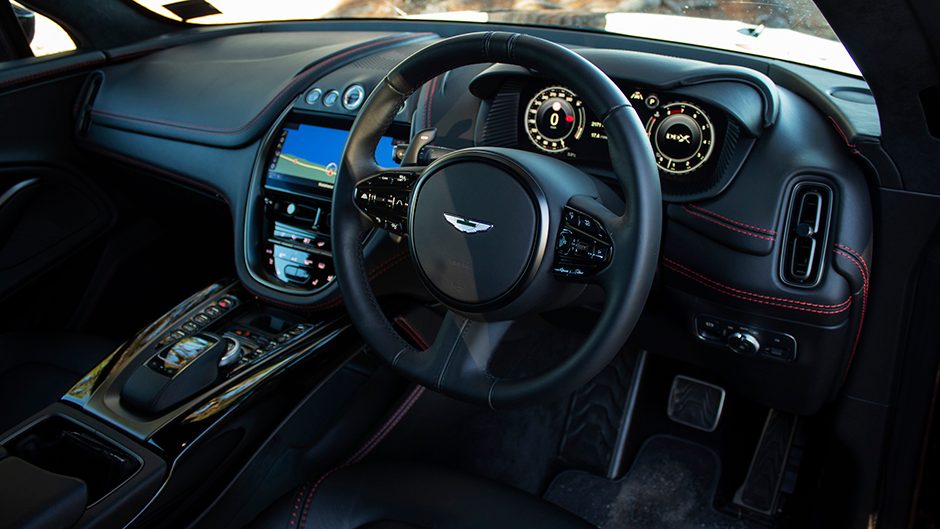
It’s exclusive; we saw countless Range Rover-badged machines and German luxo panzers on our weekend away, but only two other Astons, neither a DBX. The styling is something, attention grabbing in both size and shape, though not all are enamoured. The design intrigues but it’s not for everyone, apparently. It takes more than a moment to appreciate the sensual curves. The way the doors wrap around the sills hides the bulk, but also invites road grime to cling to the bodywork, the DBX proving hard to keep shiny. The sill shape, working with a genuinely flat floor, helps facilitate an easy entry, as there’s literally no sill to clamber over. And the way DBX lowers itself on the air suspenders allows the little ones to walk on in easily too. That is once they figure out how to operate the flush door handles.
Our three all had enough room across the cabin, and there’s oodles of leg space, though not quite enough to keep little feet off the back of the leather-lined front seats. Their dusty hoof prints were removed easily enough, the leather unmarked. The boot space you’d describe as ample for a weekend away, and despite a clientele that wouldn’t have much of a need for load hauling, this has split folding too.
Up front, the interior has been given as much attention as those exterior lines, the dash well formed, the (optional) leather work ornate. The seat may lack for the ultimate plushness, yet with the ample adjustment (particularly in the lumbar zone) you’ll find a suitable position for a few hours of pain-free driving.
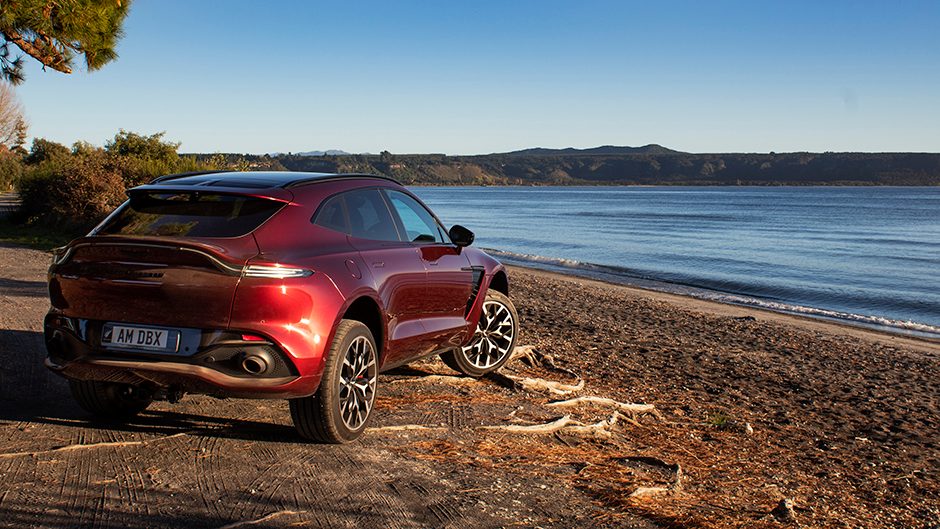
A mass of buttons takes care of most car-related functions, while the infotainment system feels a generation old already, because it is. We kept trying to tap the screen but it answers only to its twirly whirly knob master, which takes up too much space on the centre console. That said, there’s just enough cabin storage, not a given with a high-end Euro.
Of the drive modes, GT is the default, and that’s what the DBX is essentially. The three-chamber air springs give it a compliant ride, but one that’s always controlled rather than wafty. Find yourself on a flowing secondary highway and the poise is such that you can take curves swiftly without those onboard being aware of your pace.
The twin-turbo V8 delivers more than enough power, always with plenty in reserve. It burbles away at 100km/h, churning quietly below 1500rpm, and rarely hooking into ninth gear given its extra-long European legs. But when the overtake is required, the V8 sets the DBX back on its haunches and jets it forward, accounting for the stragglers quickly. It has that ‘effortlessness’ that buyers demand. This is a hushed cruiser too, wind and suspension noise muted, the tyres only sounding off on particularly harsh chip. It’s never economical, the long term average sitting around 17L/100km, and we didn’t see anything better than 12L/100km on a cruise.
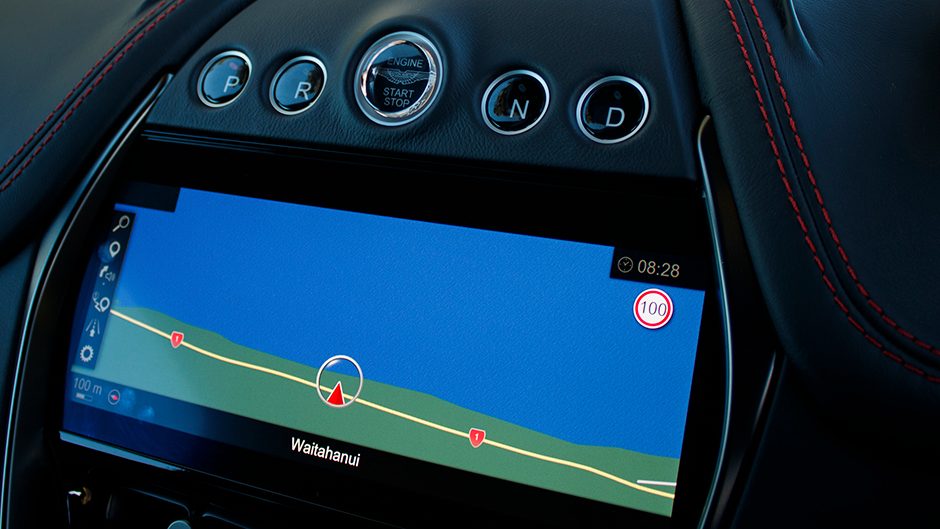
Terrain mode you might use occasionally, accessing the off-road height of air suspenders. Driving along a gravel driveway, we could hear the stones flicking up on those wrap-around doors. Thankfully this has underbody paint protection, another must-have option.
In the town centre, the DBX is particularly wide, narrow carparks docked with caution using the surround view camera and parking sensors to keep the nose clean. Its 12.4m turning circle isn’t much help either.
We managed a decent strop sans family. Slip it into Sport and you get the usual upping of the ante. It’s not quite Super SUV swift, taking 4.6sec to hit 100 with the overtake mopped up in 2.7sec.
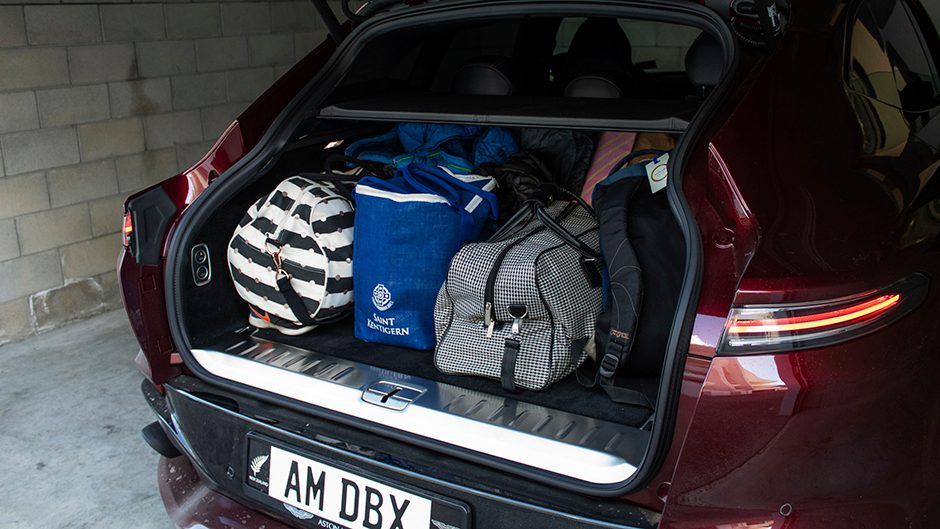
What’s more impressive is the athletic character. It has an innate balance, it’s long and stable, the mass planting it solidly while the 48v active roll control keeps it flat when cornering forces turn evil. The mass (2344kg as tested) is always composed and the DBX transitions deftly through the curves. The steering weight is finely struck, light almost, but accurate and quick enough at 2.5 turns lock to lock; the DBX points promptly for something with such a sizeable wheelbase. The front end has genuine bite and, though it’s heavy, the active roll control neutralises its effect in the bends. It’s on the brakes that the mass is most felt.
A dash of patience is required on the gas; get on it too early and you can nudge it into power-on understeer, but otherwise the variable AWD system and electronically-controlled rear LSD effectively turn the torque into forward thrust. Sport+ backs off the stability controls to give the chassis a better chance to shine, letting the front and rear squirm under duress, giving it a certain appeal to the more adventurous drivers out there. It’s an Aston Martin, after all. The engine is a proven quantity, with mammoth low end torque but power that builds right the way through the rev range to just shy of 7000rpm. Its auto is well calibrated too, not overly racy in the Sport mode but quick and efficient to render the big alloy paddles superfluous.
It’s the sort of Aston Martin that’s going to wrack up more kilometres than the usual sportsters, as this is an Aston for every occasion.
| Model | Aston Martin DBX |
| Price | $330,000 |
| Engine | 3982cc, V8, T/DI, 405kW/700Nm |
| Drivetrain | 9-speed auto, all-wheel drive |
| Fuel Use | 14.3L/100km |
| C02 Output | 269g/km |
| 0-100km/h | 4.61sec |
| Weight | 2344kg |


